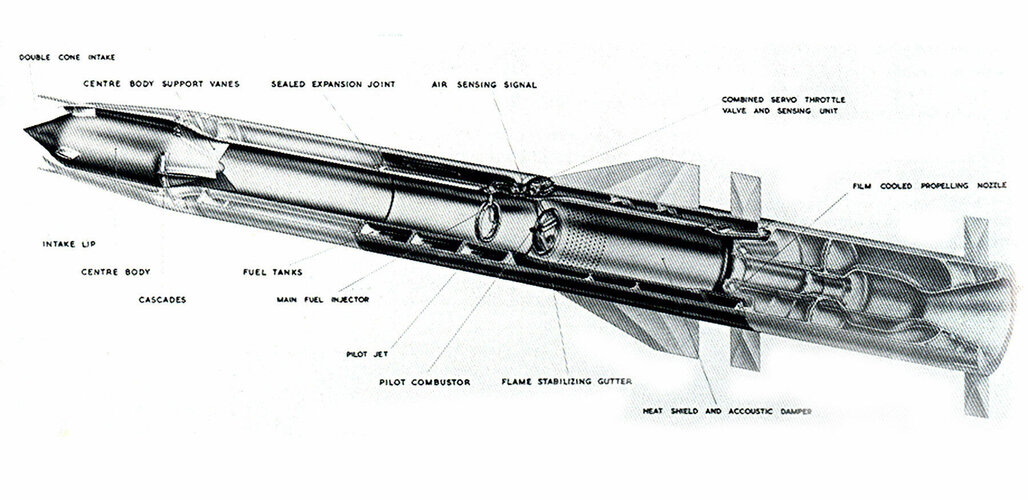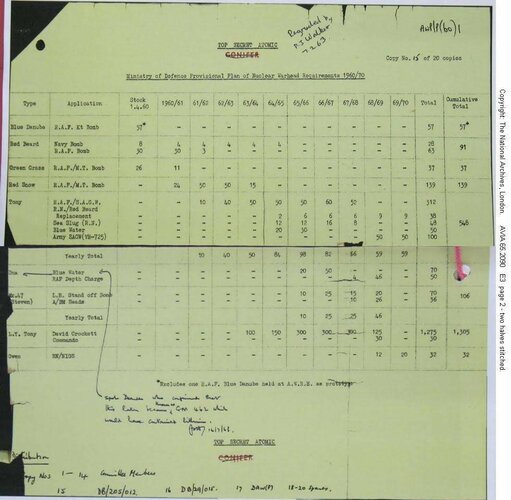The UK had been interested in the W54 - the UK version was 'Wee Gwen' - with an estimated weight of 50-55 lb and a yield of 37 tons. The W54 Mod 0 used on the AIM-26 Falcon was 50.9 lbs and had a yield of 250 tons; it's probably the closest match to what a Sea Dart warhead would require.
Crucially for this application, Wee Gwen would have had diameter of 10.75 inches, and W54 Mod 0 was only a little larger.
Somewhat amusingly, Wee Gwen was planned to be deployed with the 'David Crockett' weapon system. I imagine that 'Davy' was much too informal for the British officer class to tolerate. This was the weapon that accounted for the 'several hundred warheads a year' plans I mentioned above, and seems to have been dropped by February 1962.
Incidentally, these plans seem to peak at 790 kg of plutonium a year in 1966-1967, or 580 kg if a low-yield version of Tony (the Anglicised W44 Tsetse) was used instead of Wee Gwen. Making some very crude estimates, UK plutonium production likely peaked at around 375 kg per year.



